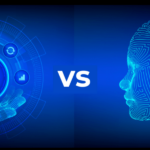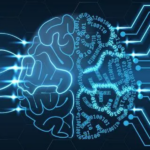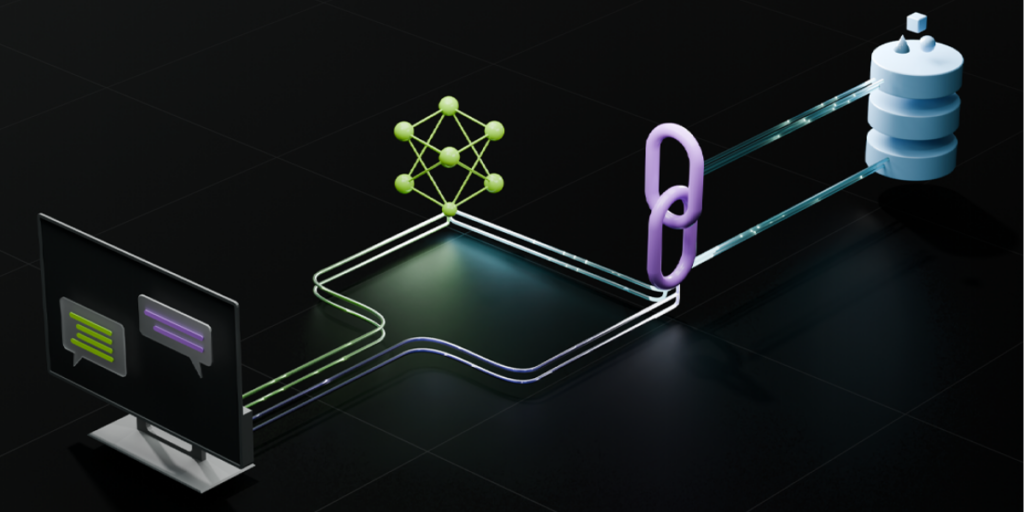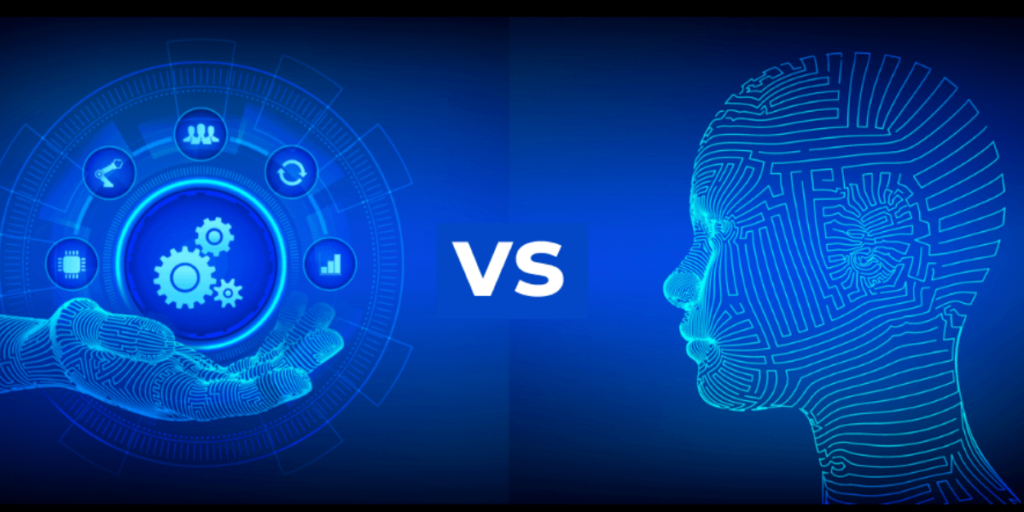As thrilling as it is to witness how rapidly the business world changes, companies must realize that in the current competitive environment, being ahead of the curve is no longer desirable. It’s a necessity! Companies must look for creative ways to enhance and refresh their workforce to ensure that. In addition, new methods should align with the current workforce’s learning styles and preferences to ensure the highest effectiveness. In this scenario, the custom eLearning method emerges as a potent tool, empowering companies to take control of their workforce development. With the introduction of technology like AI in custom eLearning transcends being just a tool. It becomes an essential game changer, putting the power of learning and development in the hands of the workforce.
This blog, written in the style of a business case, delves into the significant effect of leveraging AI in custom eLearning software development for corporate training. By the end of this blog, you’ll not only understand the importance of investing in AI-based customized training, but you’ll also feel empowered by the most effective choice.
What is eLearning?
eLearning, a short form of electronic learning and instruction offered via digital platforms, has revolutionized traditional learning techniques. It offers flexible access, affordability, and accessibility, making the learning process more comfortable and convenient for the workforce. It encompasses a range of formats, including interactive tutorials, video tutorials, or virtual simulations. Customized learning development takes these concepts to the next level by creating courses that align with the business’s requirements and objectives, further enhancing the comfort and ease of the learning process.
Basic and Advanced Features for Students
The principal function of these end-user-facing features is to allow users access to educational materials, control the learning process, and customize the app according to individual preferences.
Registration
The option to sign up properly is the first step in the list of customized e-learning options. The most effective way to handle the implementation of this feature is to connect your application with Google and the most popular social media sites, including Facebook, Twitter, LinkedIn as well as others. It is also possible to allow users to sign up or authenticate their identity by using an incoming phone call or email.
User Profile
Profile creation and configuration for users are crucial features of eLearning application development. It should let users create their profiles, alter the information as necessary, build an individual learning schedule, view all purchased courses, and set up notification settings.
Learning Content
If you know how to build an educational application, you know its primary objective. It will give users access to learning resources. Before implementing this feature, you must know the type of app you’ll develop, your intended audience, and what kind of educational materials will be offered through your mobile app or platform.
Video Content
Video content is an essential feature for eLearning platforms, and you must ensure that your app has it as one of its fundamental features.
Search
The search feature is one of the functions that you should not overlook when designing your AI in custom eLearning development process. A reliable search system should provide a variety of search options, such as searching by type of course or education topic.
Quizzes and Tests
With the introduction of this technology, students are able to test their understanding. Additionally, teachers can create tests that are automated or require personal verification.
Payment
Set up a payment system that allows students to pay for classes without using your platform. You could consider PayPal, Apple Pay, Google Pay, Stripe, etc.
Direct Chats and Feedback Forms
Communication between students and teachers is an excellent alternative to the standard capabilities. Apart from direct chats, you can also use chats to facilitate teacher-to-class and student communication.
Q&A
The Q&A section can help students find responses to their most frequently asked questions. Teachers will also provide answers before the section.
Tasks and Assignments
Homework is a vital element in every eLearning platform. Create a section for each assignment and task with deadlines attached. This allows users to evaluate assignments manually or automatically and create different subscription options. Users can buy options that include automatic and individual assessments from experts.
Progress Tracking
A dashboard showing users’ progress will aid students in tracking their performance and growth in their academics. It is possible to give them daily or weekly reports and allow them to see comparisons between different periods of time to observe how they are progressing and develop their abilities.
Push Notifications
If you’re interested in learning how to design an educational app that can maintain a high degree of user retention, push notifications are essential to your solution. They can remind users of new courses or lectures, as well as new deadlines, assignments, and other notifications.
You should also look into advanced functions when developing eLearning applications.
Offline Mode
The concept of learning on the move is a brand new idea in the present day. The internet connection may not be steady, especially when discussing commuting. Giving students the option to study and take classes online will allow them to be more flexible and the possibility of studying virtually anywhere.
Badges
In addition to tracking progress and tracking progress, you can also incorporate a sense of gamification by offering specific badges and achievements that students earn when they reach certain essential milestones, such as the week or month-long streak of studying.
Social Touch
Why not transform an educational website into an online community that brings together those who share the same issues? This feature can be implemented using Disqus, which allows students to interact with one another, share tasks, and more.
Features for Teachers
If you are thinking about creating an educational application, Be sure to consider the features for teachers. Below, you will find a list of the most essential features.
Registration
If you develop an application that permits educators to publish their own materials and classes to your platform, they must be able to sign up with your platform. The same method is used with students’ logins and incorporates Google, Facebook, Twitter, and other social media tools.
Profile
A user profile is a second important feature. Teachers must be able to change their personal information and configure the app through push notifications, for instance.
Creation of Assignments
Teachers must be able to create assignments and then send them to students. They must check who has submitted the answers and rate them.
Assessment Tools
If your platform offers individual tasks that teachers can use to assess, it should be able to provide an online platform that contains all completed assignments as well as the responses received. It is feasible to give teachers the capability to design tests that incorporate automated assessments.
Content Management
Developing a Content Management System is the most important aspect of creating an AI in custom eLearning system. Teachers and course administrators must upload content, including the whole course and individual tasks. They should also be able to modify or delete content if required. Also, you must ensure that your software can work with various types of content, such as audio, text, video, and PDF files.
Feedback and Communication Tools
When developing an eLearning application, be sure to consider the features that let teachers contact students and give their feedback.
Different Ways AI is Transforming the E-learning Industry
Here’s the way that AI within education has been bringing huge improvements in the world of e-learning
Personalized Learning Paths
AI could be utilized to monitor students’ performance and behavior to identify which areas require more attention and which ones they can handle more easily. This would allow the system to develop a personalized learning path for students individually, making sure that they get specific content that meets their education needs.
Adaptive Learning
AI can modify learning materials quickly based on the student’s level of understanding and current challenges. With this system installed, students can learn the content at their own pace and review complex parts more frequently.
Intelligent Tutoring Systems
With an AI-powered, intelligent teaching system, students can receive support or feedback anytime they need help with their studies. The program can respond to questions quickly since it draws from extensive data collection.
Furthermore, these systems include tutorials and guides, as well as activities related to the subject being studied, that make learning more enjoyable for students.
Natural Language Processing
One of AI’s biggest advantages for education is its capacity to utilize natural language processing (NLP). Through NLP, AI can interact with learners naturally and respond to questions about the course more quickly and accurately.
Predictive Analytics
With AI-enabled predictive analytics, students can visualize and assess their progress as they work through the curriculum content. The data can help teachers plan lessons for the future, assign tasks in a timely manner, provide feedback, and create detailed reports that enable teachers to assess their students’ performance over time.
Content Creation
Another advantage of artificial intelligence in education is its ability to automate content creation for online learning courses. This technology can quickly generate content based on information provided by instructors, such as learning goals, lecture notes, and other information. Furthermore, it will allow faster content updating as new information is available or course goals alter.
Integration of Virtual Reality and Augmented Reality
AI for learning can incorporate Virtual Reality (VR) and Augmented Reality (AR) technologies to enhance the quality of education. These innovative technologies allow students to interact with educational material in immersive ways, going beyond traditional learning methods.
Gamification in eLearning
AI is also utilized to create games and interactive learning experiences customized to users’ preferences. It can analyze data from users, such as performance metrics, to tailor the learning experience by suggesting the appropriate content or activities based on the user’s preferences and performance measures.
Artificial Intelligence has changed how we approach learning online by presenting new possibilities.
AI Innovations Transforming E-Learning
AI advances are changing eLearning, and this is a result of multiple aspects. Let’s look at them:
Power of Machine Learning
- Analyzing Student Data: The data from the source, such as assessments, quizzes, and logs of students’ interactions with the system, is fed to an algorithm for machine learning to process and detect changes in students’ behavior and performance patterns.
- Predictive Analytics: These programs predict student performance and determine those likely to perform poorly in developing interventions that address the problem.
- Individualized Learning Pathways: Machine learning based on data analysis aids in developing learning programs that meet the individual student’s needs by identifying areas that need assistance at their own speed.
Understanding NLP
- Real-time Student Support: NLP-enabled chatbots can immediately respond to students’ questions and provide directions or other materials if needed.
- Improved Language Learning: NLP permits conversational practice, which means students can learn to speak through an AI tutor that is part of the system.
- Content Summarization: It could be used to summarize texts and provide a summary for better comprehension by students who have difficulty understanding certain concepts.
A3Logics is an education software development company that assists your business in implementing AI options for your online learning platform and, additionally, with enterprise AI chatbot solutions to enhance user interaction and add efficiency to your company’s workflow.
Adaptive Learning Systems
- Continuous Assessment: In adaptive learning, the student’s performance is monitored for short periods to make new material and difficulty levels readily available.
- Tailored Content Delivery: Unlike traditional methods of rote memory, AI in custom eLearning can contain topics such as additional problems or more advanced content depending on the student’s proficiency.
- Feedback and Recommendations: Apps for eLearning can assist adaptive systems by providing thorough feedback to every student and suggesting ways to learn a subject to get higher scores.
Collaborative Learning
- Peer Interaction Analysis: Self-organizing AI detects and manages student relationships to facilitate collaboration and peer learning.
- Group Forming Process: Building from a common starting point, AI can also form multiple study groups that include individuals with similar abilities and learning requirements, thus making it easier for groups to study.
Strategies for Using AI for eLearning Content Creation
AI is an effective tool that can transform eLearning content creation. Its ability to automate tasks to tailor education experiences and create content AI transforms how educational materials are designed and distributed.
This section will examine effective ways to use AI for eLearning content creation. We will use the technology’s abilities to improve personalization, deliver an immersive experience for learners, assure quality and efficacy, aid in multilingual content creation, and lower cost.
Personalization
One of the main advantages of AI in custom eLearning is the ability to customize learning experiences. Tools for adaptive learning that incorporate AI capabilities are able to analyze student data, identify their weaknesses and strengths, and then dynamically alter the learning content to suit their individual needs. Through tailoring the learning experience for individual learner needs, AI promotes engagement, improves motivation, and helps to develop greater knowledge of the subject.
Immersive Learning
AI can improve the efficacy of eLearning methods like mobile learning (mLearning) and gamification by making them more immersive. AI-powered virtual reality (VR) and AR technology can provide immersive and real-world learning environments that allow students to investigate concepts and apply their knowledge in a hands-on, engaging way. This approach increases knowledge retention and offers a more lasting learning experience.
Continuous Monitoring
To ensure the highest quality, diversity, equity, inclusion (DEI), and effectiveness, it is crucial to constantly monitor and assess the AI-powered eLearning content-creating process. Utilize performance metrics, feedback loops, and other methods of evaluation to determine the efficacy of content creation and make any necessary adjustments. This iteration method allows for continuous improvement and ensures the content meets expectations.
Automated Content Generation
AI can automate the process of creating content, saving instructors and instructional designers time and energy. Large-scale language and image AI models can automatically create content that includes blog posts, articles, or social media posts. They can produce top-quality, engaging, relevant, and informative content based on certain guidelines and parameters, thus freeing human resources to focus on other crucial aspects of developing eLearning.
Efficient Content Creation
AI streamlines the content production process by automating repetitive tasks, like formatting, proofreading and editing, making its work more productive. AI-powered tools can assist in arranging and structuring the content, ensuring consistency across the course. This helps instructors and instructional designers dedicate their time and effort to designing more engaging and relevant learning experiences.
Multilingual Content Creation
AI will facilitate the production of multilingual media, breaking down language barriers and bringing it to a larger audience. AI models for languages that can translate texts into various languages allow the distribution of online learning materials to diverse learners. This makes it easier to access and promotes inclusion. It also helps in global learning initiatives.
Cost-Effectiveness
AI provides cost-effective software solutions for the creation of eLearning-related content. By automatizing various steps of the process, AI can reduce the need for significant human involvement while reducing the costs associated with human resources and manpower. Furthermore, the effectiveness and flexibility offered by AI will result in substantial cost savings over the long term. This cost-effectiveness enables organizations and educational institutions to invest their funds in increasing other aspects of their learning experience.
Revolutionizing eLearning With AI: 5 Use Cases To Consider
This section will explore the applications of AI in custom eLearning as well as how the technology can adapt the content to a world audience and speed up production and translation.
LLMs For Content Localization
Large Language Models (LLMs) are Machine Learning models trained on vast amounts of textual data to generate and learn human-like languages. They are trained using large data sets that seek to comprehend patterns or structures and the language’s contextual subtleties. LLMs can recognize and comprehend textual content in the eLearning images. This capability allows for adapting content using images to diverse cultures, languages or geographical regions. This will enable students from diverse backgrounds to understand and access your teaching content efficiently.
Automated image editing and solutions also utilize LLMs. The models, when paired with image processing algorithms, can automatically modify and edit images and change the text. This allows continuous contextual adjustments and text translation from images into various languages. LLMs integrate the processing of language to modify and localize image-based learning materials. This can be a powerful way to create multilingual, flexible and current online learning platforms and environments that align with your company’s training policies and objectives.
AI In Synthetic Voice Technology
Synthetic voice technology produces computer-generated or artificial voices to transform written text into spoken language. The technology employs advanced algorithmic processing to create natural-sounding speech tones, phrases, and patterns. In eLearning, tools like AI-assisted artificial audio can create human-like voiceovers for training materials. It permits specification that includes tone, pace, and accent to adapt to different learning styles, specifically for auditory learners.
Modern AI-assisted synthetic music technologies can offer the following characteristics and functions:
- Make use of advanced neural networks and are trained to recognize human speech.
- High sample rates are comparable to studio recordings.
- Create AI voices that alter speed, tone and pitch to create natural and expressive voices.
- Adjust to feedback, like correcting mispronunciations as time passes.
- Provide a variety of voices and capture various accents, languages, genders and ages.
Using artificial voice technology, AI-generated content for training is more efficient because it simplifies content production through rapid audio production. Artificially assisted voiceover for eLearning also has a lower cost and faster turnaround times, cutting costs and time to production by a quarter compared with human voiceovers.
AI For Simulations And Interactive eLearning Materials
Interactive scenarios, AI-driven simulation demonstrations, and interactive scenarios can provide your employees hands-on learning experiences. For instance, AI-powered platforms can use the generative model to create videos that are realistic and interactive visual content suitable for e-learning.
Generative AI (GenAI) can assist in creating narratives that branch out or interactive video scenarios that allow learners to select their preferred language or follow specific routes that align with their culture. GenAI can also create custom avatars or characters that provide information in the video. It lets you design avatars or characters to reflect different appearances and cultures, which makes content more appealing to global, multilingual viewers.
GenAI offers a myriad of possibilities for developing eLearning videos. However, human review and oversight are essential to ensure the content created aligns with the learning goals and can meet the learner’s requirements, particularly in an international workforce.
AI For Training Program Analysis And Enhancement
AI is essential in analyzing training programs and enhancement because it can analyze tracks and analyze and review crucial data like learning performance. For instance, AI algorithms can analyze vast datasets of learners during training and detect patterns, correlations, and patterns to provide valuable insights into learners’ performance. AI algorithms also help you identify weaknesses and strengths, allowing you to swiftly identify weaknesses and modify the training program to maximize learning through e-learning.
AI is also able to do the following:
- Automate the evaluation of quizzes, assignments, and simulations and provide instant feedback to students so they can see their progress immediately.
- Utilize Natural Language Processing (NLP) algorithms to analyze qualitative feedback. AI can determine learners’ moods, recognize common themes, and provide a better understanding of the learning process.
- Predictive analytics can be used to forecast an individual’s learning path and results. AI can look at the past and recommend personalized learning paths best suited for every learner to ensure an efficient training program.
- Monitor learner engagement, identify problems in real time, and provide prompt intervention to aid each learner’s growth.
Improve learning by adjusting them dynamically in accordance with learners’ progress. AI can identify areas of difficulty and alter the program or suggest additional resources to meet particular needs, enhancing the learning experience.
AI For Learning Code Development
AI in learning through code development offers new methods and tools to help with programming education and training. GenAI tools allow for the automated production of code-learning content, including explanations, tutorials, and examples of programming concepts and languages. Tools like ChatGPT enable natural language interaction to create course content for code development.
Trainers and educators can enter into lively conversations using ChatGPT’s AI model and instantly create courses, such as tests, quizzes, and code-related challenges in various languages.
AI models, including GenAI-based models, may offer an autocomplete solution that helps learners write code efficiently and correctly while following best programming practices. AI models also provide learners with immediate help, offering immediate feedback and answering questions from students regarding code short snippets. They can identify the most common mistakes learners make, help learners understand the concepts of programming, and solve problems efficiently.
Conclusion
AI’s capability to provide interactive and customized learning experiences tailored to each person’s preferences and learning styles has incredible potential to transform the field of eLearning. Companies can reap the advantages of creating a custom software solution by taking an approach that is mindful of and overcomes the obstacles inherent in AI.
The right equilibrium between AI-driven learning outcomes and awareness of possible risks could allow organizations to effectively harness AI’s power to create a more productive and welcoming learning environment that accommodates a wide variety of learners.
FAQs
What are examples of AI in eLearning?
Here are a few instances of AI used in eLearning:
- Chatbots
- Content recommendation engines
- Natural Language Processing (NLP)
- Virtual Reality (VR) and Augmented Reality (AR)
What are the most important types of eLearning software?
Educational apps can come in various types. There are internal solutions for training that businesses use for employee training. Additionally, outside training solutions are readily available to anyone, including marketplaces for educational resources, apps for language learning, etc.
What are the ethical considerations regarding the use of AI in eLearning?
The ethical considerations surrounding using AI in e-learning include privacy concerns, data security, algorithm bias, transparency, and accountability. It is crucial to ensure that student information is safe, algorithms are fair and impartial, and the decisions taken by AI systems are explained and defended.
What is the impact of AI eLearning?
Artificial intelligence can also provide immediate and precise feedback about students’ performance. AI systems can assess responses and provide precise feedback swiftly and objectively. This allows students to identify areas for improvement and swiftly correct their mistakes, speeding up the learning process.








